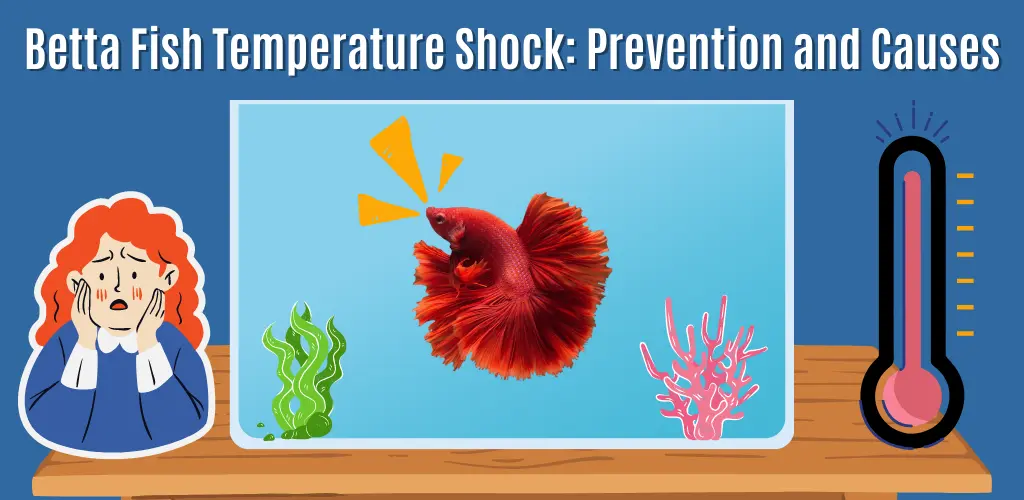Betta fish, also known as Siamese fighting fish, are a popular species of freshwater fish kept as pets. They are well-known for their vibrant colors and graceful movements, making them a favorite among aquarium hobbyists. However, these beautiful fish are also delicate and prone to a phenomenon known as temperature shock, which can have severe consequences for their health. In this article, we will delve into the causes, symptoms, and ways to prevent Betta Fish Temperature Shock.
What is Temperature Shock?
Temperature shock is a sudden change in the water temperature in a betta fish’s environment. Betta fish are native to slow-moving, warm water environments in Southeast Asia, and sudden temperature changes can significantly impact their health. These changes can cause stress, reduce the fish’s immune system function, and even lead to death.
Causes of Betta Fish Temperature Shock

Several factors contribute to temperature shock in betta fish, including:
Rapid temperature changes
The sudden addition of too hot or too cold water to a betta fish’s tank can cause temperature shock. This can occur when a hobbyist changes the water in the tank or adds water that has not been acclimated to the tank’s temperature.
Poor water quality
Betta fish are sensitive to pollutants and low oxygen levels in the water. If the water quality in their tank is poor, it can increase their risk of temperature shock.
Lack of a stable environment
Betta fish need stability in their environment to thrive. A lack of stability, such as fluctuations in temperature, can cause stress and increase the risk of temperature shock.
Symptoms of Temperature Shock
Temperature shock in betta fish can manifest in several ways, including:
Decreased Appetite:
A decrease in appetite is a common symptom of temperature shock in Betta fish and can indicate stress or illness.
Lethargy:
Betta fish that are experiencing temperature shock may become lethargic and less active than usual.
Clamped Fins:
The fins of a Betta fish may become clamped, meaning that they are held close to the body, which is a sign of stress and discomfort.
Shimmying or Twitching:
Betta fish can display signs of shimmying or twitching after a temperature shock. It is a sign that the fish is experiencing stress and cannot regulate its body temperature effectively.
Discolouration of the Skin:
Betta fish experiencing temperature shock may display changes in their skin color, becoming paler or losing their vibrant colors. This is a sign that the fish is experiencing stress and cannot regulate its body temperature effectively.
Difficulty Swimming:
Betta fish experiencing temperature shock may display signs of sluggishness and have trouble swimming and maneuvering in their tank. They may also float at the surface or sink to the bottom of the tank, which is a sign that they are experiencing stress and difficulty swimming.
Labored Breathing:
Labored breathing in Betta fish is characterized by an increased rate of respiration and an increased effort to breathe. The fish may open its mouth and gulp at the water’s surface, indicating it is having difficulty obtaining enough oxygen. This is a sign that the water temperature is too warm or too cold for the fish, and is experiencing stress.
If you notice any of these symptoms in your betta fish, it’s essential to take immediate action to prevent further harm.
Treatment of Betta Fish Temperature Shock

Treating Betta fish temperature shock requires prompt action and attention to detail. The first step in treating temperature shock is to identify the source of the problem and make necessary changes to the water temperature and quality. If the water temperature is too high or too low, it should be adjusted to the appropriate range, typically between 76°F and 80°F. It’s essential to gradually acclimate the fish to the new water temperature to prevent further stress and shock.
Next, addressing water quality issues, such as high levels of nitrates, ammonia, or chlorine, is essential. Regular water changes, proper filtration, and adequate aeration can help maintain good water quality and reduce the risk of temperature shock. In some cases, adding aquarium salt or a water conditioner may also be necessary to support the fish’s recovery.
It’s also crucial to provide your Betta fish with a comfortable and stress-free environment. This may include adding hiding spots, live plants, or other decorations that offer shade and security. Maintaining good water quality and stability will help prevent future episodes of temperature shock and keep your Betta fish healthy and happy.
If your Betta fish continues to show signs of distress or illness despite your best efforts, it’s essential to consult with a veterinarian or aquarium specialist. They can provide additional guidance and treatment options, including medication and supplements, to help your fish recover from temperature shock and maintain its health and well-being.
How To Cool Down A Fish Tank
A Betta Fishtank is essential to a fish’s habitat, and keeping the water temperature in check is crucial for their well-being. During summer months or due to heating equipment malfunction, the water in the tank can become too warm, endangering the Fish. In this situation, it is necessary to cool down the tank to ensure a healthy environment for the Fish.
Step 1: Determine the Current Water Temperature:
The first step in cooling down the Fish tank is to determine the current temperature of the water. This can be done using a thermometer or a thermometer strip.
Step 2: Turn off the Heater:
If the water temperature is too high, the next step is to turn off the heater. Turning off the heater will allow the water temperature to start cooling down.
Step 3: Add Cool Water:
To speed up the cooling process, adding cool water to the tank can be helpful. Tap water is generally at room temperature, usually cooler than the water in the tank. Be sure to add the water slowly to prevent shocking the Fish.
Step 4: Use a Fan:
Placing a fan near the tank can also help to cool down the water. The fan will circulate the air around the tank, causing evaporation, which will, in turn, lower the water temperature.
Step 5: Use Ice Packs or Frozen Water Bottles:
Placing ice packs or frozen water bottles near the tank can also effectively cool down the water. Ensure the ice packs or frozen water bottles are not in direct contact with the water, as this could shock the Fish.
Preventing Temperature Shock
Preventing temperature shock in betta fish requires maintaining a stable temperature in the tank and providing good water quality. Here are several steps you can take to avoid temperature shock:
- Gradually Change the Temperature: When changing the water in your betta fish tank, slowly acclimate the new water to the tank’s temperature. This can be done by adding small amounts of water at a time and allowing it to sit for several hours before adding more.
- Monitor Water Quality: Regularly check the water quality in your betta fish’s tank and make changes necessary to maintain good water quality. This can include regular water changes and the use of a water conditioner.
- Use a Thermometer: Use a thermometer to monitor the temperature of the water in your betta fish’s tank and make adjustments as necessary.
- Avoid Overfeeding: Overfeeding can lead to poor water quality, so feeding your betta fish only what they can eat in a few minutes is essential.
Conclusion
Betta fish are delicate and susceptible to temperature shock, which can have severe consequences for their health. By understanding the causes and symptoms of temperature shock and taking steps to prevent it, you can ensure that your betta fish thrives and stays healthy. With proper care and attention, these beautiful fish can bring joy and beauty to your aquarium for many years.




Pingback: Betta Fish As A Pet For Kids: A Guide For Parents - Betta Fish Advice
Pingback: Betta Fish Getting Stuck To Filter Intake: Causes And Treatment - Betta Fish Advice
Pingback: How Long Can A Betta Fish Live Without A Heater? Answered